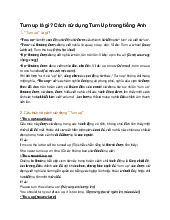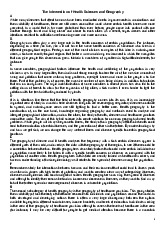
ID
Communication
and
language
Vocabulary
A
Collocations:
Communication
1 Work in groups. Describe
the
pictures
below
and
discuss:
1
how
each
is
connected
with
communication.
2
what
other
means
of
communication
are available nowadays.
3
how
useful
the
devices are.
B c
2 In
the
list
a-f,
rank
the
top
three
reasons for studying
communication
skills as
part
of
a university course.
a helpful in
the
modern
world
b improves confidence
c develops
interpersonal
skills
d
enhances
career
opportunities
e provides
opportunities
for
meeting
people
f improves
performance
on
other
courses
3 Compare your answers
in
groups,
then
with
the
rest
of
the
class.
4 Answer
the
questions 1-10. Use
these
words
and
the
word
communication.
different
methods
of
a
breakdown
in
difficulties
or
problems
cross-cultural
instant
satellite
electronic
and non-verbal
skills
improve
mass
1
What
kind
of
communication
is email
an
example of?
2
What
kind
of
communication
reaches a large
number
of
people?
3
What
kind
of
communication
is
used
to guide cars nowadays?
4
What
happens
when
communication
with
the
outside world stops?
5
What
do you
need
to
work as a teacher?
6
What
do electronic devices
such
as mobile
phones
give you?
7
What
do you have
when
communication
works
but
doesn't
work
well?
8
What
are newspapers, TV
and
radio?
9
What
kind
of
communication
goes across cultures?
10
If
communication
with
other
countries
is poor,
what
do
we
need
to
do?
m
Communication
and
language

Listening
5 Complete
the
beginnings of these examiner
and
candidate
dialogues. Use
one
word
from exercise 4 for
each
answer.
I Examiner: Do you
think
it is
important
to have good
communication
......
.
...............
.
..........
.. ..
when
looking for a job?
Candidate:
Yes,
I
think
they
are very
important,
especially
at
interviews.
2 Examiner:
What
of
communication
will
be
common
in
............................
future?
Candidate: I
think
there
will
be
more
.............
.
...
.
...
communication, for
example by video,
and
less person-to-person
communication
and
more
communication
.
.....................................
3 Examiner:
What
do you
think
is
the
difference between . .
........
..
........
.
nowadays
and
in
the
past?
Candidate: Even
in
the
recent
past, people
had
communication
............................
because even
in
rich countries people didn't have landline
telephones, so everything was
much
slower
than
today.
4 Examiner: How do you
think
communication
between countries
can
be
?
.............................
..
...
Candidate:
.........
...
.....
.
................
communication
is one
way.
For example, people
can
take
part
in
exchanges of ideas.
5 Examiner: Do you
think
.......................
..
.....
.
.....
communication
like newspapers
will change
in
the
future?
Candidate:
Yes,
definitely. At
the
moment
we have
...
6 Work
in
pairs. Take
turns
to
ask
and
answer
the
questions
in
exercise
5.
The
student
answering
the
questions should
not
look
at
the
answers. Develop
the
answers in your
own
way.
IELTS
Listening
Section
3
Pre-listening
1
You
are going to listen to a final tutorial
between
two
students
and
a teacher. Look
at
questions
1-10
below
and
on
page 140.
Find questions
that
relate to
a-d.
Give reasons for your answers.
a The
students
ask for advice
about
exam preparation.
b One
student
says
what
he
liked
about
the
course.
c The
tutor
makes
comments
about
the
postgraduate
institutions
the
students
are
planning
to
go
to.
d One
student
says why she
changed
courses.
Listening
2
@)
DD Follow
the
instructions
and
answer questions 1-10.
Questions
1
and
2:
Choosing
items
from
a
list
Choose TWO letters, A-E.
Which
TWO things does Alan say
about
the
course in
communication
skills
and
language?
A He enjoyed
the
weekly seminars.
B The lectures
interested
him
a lot.
C Doing
the
course
project
was very enjoyable.
D He liked
the
school visits
better
than
anything.
E The visiting lecturers were outstanding.
•FP•

Language
focus
Questions
3
and
4:
Choosing
items
from
a
list
Choose
TWO
letters,
A-E.
What
TWO
reasons does
Fatima
give for
changing
to
the
communication
skills
and
language course?
A The course generally
had
a very good
reputation.
B The
tutors
on
the
course were well known.
C The
cost
of
the
course was lower
than
all
the
others.
D The tutorials were
held
frequently.
E There was a practical
component
on
the
course.
Questions
5-7:
Multiple
choice
Choose
the
correct
answer, A, B, C
or
D.
5
What
does Alan say
about
reading for
the
exams?
A He's
bored
of
reading
and
can't
read
anymore.
B He
hasn't
read
enough
in
some
areas.
C He
hasn
't
read
his
notes
again.
D He's
read
too
much
and
is tired.
6
What
advice does
the
tutor
give
the
students
about
studying
just
before
the
exams?
A They
can
continue
working
up
to
each
exam
in
a leisurely manner.
B They should
concentrate
on
the
notes
they
took
rather
than
books.
C They
ought
to
go to
the
gym
or
to
the
cinema.
D They should
stop
working
about
a day before every exam.
7 The
tutor
gives
the
students
A a
printed
copy
of
an
exam
preparation
advice sheet.
B a
last
-
minute
checklist for revision.
C a checklist
of
dos
and
don
'ts
in
the
exam.
D
some
ideas for relaxation before
each
exam.
Questions
8-10:
Matching
What
does
the
tutor
say
about
each
of
the
postgraduate
institutions? Write
the
correct
letter
, A, B
or
C
next
to questions
8-10.
A only
one
previous
student
has
gone
there
B
some
previous
students
went
there
C no
students
at
all have gone
there
Institution
8 Rockham College
9 Bart's
Institute
10 St
John
's
School
of
Languages
Ellipsis
and
substitution
1 Underline
the
correct
words
in italics to explain
the
meaning
of
ellipsis
and
substitution. For
more
information
look
at
the
Grammar
on
page 156.
1 Ellipsis
occur
s
when
words
are left out of/added to a sentence.
2 Substitution occurs
when
you
replace
words
in
the
sentence
with
another
word/punctuation.
m
Communication
and
language

2 Look
at
the
examples from
the
Listening section
and
answer
the
questions 1-3.
1
Fatima: And I
changed
over
to
the
communication
skills
and
language course
...
Tutor: And are you glad you did so?
2
Alan:
I
think
that
I could've
spent
more time
on
reading for
some
of
the
modules.
Fatima: I'm sure we all could have,
...
3
Alan:
Yes,
but
I'm
not
very good
under
exam pressure. I
panic
more
now,
but
when
I was
at
school I didn't.
1 In 1,
what
does
the
word
so
refer to?
2 In
2,
when
Fatima says
we
all could have,
what
does she mean?
3 In
3,
what
does I didn't
mean?
3 Decide
whether
the
examples in exercise 2
show
ellipsis or substitution. Use
the
Grammar
on
page 156
to
help you.
4 Remove any
unnecessary
words from
these
sentences. In one sentence,
add
a
substitution
word
.
0 I
text
a lot,
but
my
mother
doesn't
text
a lot.
I
text
a
lot,
but
my
mother doesn'
t.
1 I find
it
difficult to
communicate
by video,
but
my sister doesn't find
it
difficult
to
communicate
by video.
2 Although people
used
to write lots of letters in
the
past,
they
don
't write letters
anymore.
3
Some people
don
't
think
that
learning languages is valuable, while
many
believe
it
is.
4 People often
try
to leave
their
mobile
phones
at
home,
but
they
find
that
they
aren't able
to
leave
them
at
home.
5
People
used
to design
products
by
hand
rather
than
on
computers,
but
nowadays
they
can
't design
products
by
hand
rather
than
on
computers
even if
the
computer
breaks down.
6 The
human
race
wants
to
communicate
with beings
on
other
planets
,
but
if
they
do
communicate
with beings
on
other
planets, will we
be
at
risk?
7 Languages have disappeared from
the
school curriculum in
some
schools,
but
here
they
haven't disappeared from
the
school curriculum
in
some
schools.
8 The
government
hasn
't
spent
as
much
money
as
other
countries on making
broadband
available to everyone,
but
they
should have
spent
as
much
money
as
other
countries.
5 In
the
sentences
in
exercise
4,
replace
unnecessary
words
with a verb or auxiliary
verb+
so.
I
text
a lot, but
my
mother doesn't do
so.
6 Work in I?airs. Take
turns
to ask
and
answer
the
following questions. Develop the
answers
m your
own
way.
m
Communication
and
language
0 Does everyone have a mobile
phone
nowadays?
I thi
nk
most
do,
especially
you
ng
people
and
business
people,
but m
aybe
older
pe
op
le
don't.
1 Should
communication
skills
be
taught
in all schools?
2 Can everyone
learn
a foreign language?
3 How easy is
it
to
use Skype
on
the
Internet?
4 Did people use to write
more
letters
in
the
past
than
now?

Speaking
1
IELTS
Speaking
Part
2
1 Choose
one
of
these
Task Cards, A-D.
A
c
Part 2
Describe your favourite medium
for
learning, eg,
using books, discussions,
electronic devices.
You
should say:
what the medium
is
when
you
first used the medium
when you use the medium
and
explain
why
you
prefer the medium to other
media.
Part 2
Describe a documentary that taught
you
something about the worl
d.
You
should say:
what the documentary was
when
you
saw the documentary
wh
o
yo
u saw it
with
and explain
why
you
th
i
nk
the documentary
taught
you
somethi
ng
about the world.
B
D
Part 2
Describe the method of communication
you
use
to keep
in
contact
with
your friends or
family.
You
should say:
what the method
of
communication
is
when
you
first used the method
how
often
you
use the method
of
communication
and
explain
why
you
li
ke
usi
ng
the method.
Part 2
Describe a game you l
ike
which taught
you
a
ski
ll.
You
should say:
what the game
is
when you first played the game
how
often
you
played the game
and
explain why/how the game taught
you
a
skil
l.
2 Write
notes
for your
chosen
card. Then practise giving
your
answer to yoursel
f.
Decide
which
of
the
following ideas
might
be
relevant to your answer.
1 I
learnt
how
my own
country
was influenced by
other
cultures.
2 It
taught
me
how
to
communicate
with
other
team
members.
3 It is easier
to
carry
around.
4 It
changed
my
attitude
to
other
cultures.
5 I
can
see
them
even
though
they
are far away.
6 I
learnt
how
to
respect
other
people
when
communicating.
7 It is
more
exciting
than
other
media.
8 It's
better
than
just
listening
to
them
on
the
phone.
3 Find a
partner
who
has
prepared
a different
card
. Take
turns
to give your answers
for your
chosen
cards.
Reading
Pre-reading
1 Work in pairs. Write
down
at
least
three
facts
that
you
know
about
whales. Then
form a group with
another
pair
and
compare
your answers.
•n•
2 Scan
the
passage
and
find as
much
information as
you
can
about
the
facts your
group listed.
Reading
3 Follow
the
instructions
and
answer questions 1-13.
m
Communication
and
language

A The sound
of
Ba
leen
Wha
les is the
loudest produced
by
any
a
ni
ma
l
on
earth and travels for many k
il
ometres
underwater. It may
be
used for long-
range contact, meeting
ca
ll
s,
in
their
search for mates, as a greeti
ng,
threat or i
nd
ividual identification.
Th
ey
produce mostly l
ow
-frequency
sounds, which are for long-distance
communication, orientati
on
and
navigation.
W
ha
le communication
occurs through
low-frequency moans,
as
we
ll
as
hi
gh-frequen
cy
w
hi
st
les
that
are produced
by
the whales.
Wha
les also communicate
by
means
of
body language such as slapping
their ta
il
s.
Wha
le noises such as
forceful spouts
of
water may signal
annoyance, and the slapping
of
flippers indicates excitement or
aggression.
B
Wha
les use beautiful l
yr
ical sounds
ca
ll
ed
whale song to commu
ni
cate
with each other.
As
whales are
so
large and powerful, they make very
loud sounds
that
can
be
heard for
many
k
il
ometres.
Wha
les
have
been
known to generate about
20
,
000
acoustic watts
of
so
un
d
at
163
decibels.
C Some whale species produce a
pattern
of
regular and predictable
whale
sounds, the most
no
table
being the
Hum
pback
Wh
al
e.
It has
been compared with human musi
c,
with these creatures being the
'composers'.
On the other hand,
most toothed
whales do not produ
ce
whale son
g,
but
in
stead p
ro
du
ce
rapid bursts
of
high-frequency c
li
cks
and
wh
istles. Single clicks are known
to
be
used in echolocation ; however,
a
co
ll
ection
of
clicks together is for
communication.
Male Humpback
Wh
ales make these sounds dur
in
g
Whale
son
the mating season, w
hi
ch
suggests
that
the purpose of their songs is to
se
lect a mate. It is unknown whether
it is
also their means
of
defining
territory or even
fl
irti
ng
between
ma
les and females.
D Whales occupying the same
geographical location tend to sing
similar whale songs, only varying
them s
li
ghtl
y.
H
owever,
whales
f
ro
m different areas sing different
songs. A study over a period of
19
years found
that
the same song
combinations never occurred,
suggesting
that
whales
ne
ver reuse
o
ld
song patte
rn
s.
Wh
ales
in
on
e
area si
ng
the same song at
any
po
int
in time, a song which
constantly and
slowly changes over time.
Over
any
gi
ven
period, one so
ng
will start with
increasing frequency but may
sl
ow
ly
flatten
to become more
co
nstant. A
Questions
1-6:
Matching
information
wha
le will typically repeat the same
phrase
of
song over a
nd
over aga
in
for two to four minutes
at
a time.
Th
is is known as a theme,
of
which a
co
ll
ecti
on
makes a song.
The
whale
repeats the same song,
wh
i
ch
may
last up to
30
minutes and
eve
n for
days at a time.
E
The
mechanisms used
by
whales
to produce sound vary from one
species to another. Most
wha
les
produ
ce
whale sou nds
by
pass
in
g
air through a structure in the head
ca
ll
ed
the phonic
li
ps.
The
li
ps vibrate
as the air passes through them and
these vibrations can be
consciously
controll
ed
with great sens
it
ivity. Th
ey
pass th
ro
u
gh
to the melon
of
the
head, which shapes and directs the
sound into a beam for
echolocation.
The air may
be
recycled back to
be
used for sound creati
on
yet aga i
n,
or
passed out through the
blowhol
e.
A
ll
toothed whales, except for the Sperm
Whale, have two se
ts
of
phonic
lips; therefore they are capable
of
making two sounds independentl
y.
Baleen W
ha
les do not have phonic lip
stru
ct
ures,
on
ly a larynx that appears
to
pl
ay
a
ro
le in producing whale
sound.
F Mari
ne
creatures are largely
dependent on sou
nd
for
communicati
on
and sensation,
as their other senses are
li
mited
due to their watery habitat.
Environmentalists appear to be
concerned about
whales
be
ing
harmed and n
ot
be
in
g able to find
mates because
of
the increased
noise levels at sea caused
by
ships
and other sources.
The
Humpback
Whale songs for instance are often
disrupted and this causes immense
panic
in
the grou
p.
The reading
pa
ssage
ha
s six
paragraph
s,
A-F
.
Which
paragraph
contains
the
following
information?
You
ma
y use any letter
more
than
once.
m
Communication
and
language
1 a detailed description of whale song
......
....
..
.
2
the
possible
connection
between
wha
le
communication
and
breeding
3
the
fact
that
noise pollution
ma
y
disrupt
the
mating
activities
of
whales
4 different
method
s
of
communic
ation
among
whales
..
....
.. ....
.
5 a reference to
the
effect
on
wh
ales
of
human
activity
..
.....
..
..
..
6
the
fact
that
s
ounds
made
by all species
of
whales are very
loud
..

Questions
7-9:
Labelling
a
diagram
Label
the
diagram below. Choose NO MORE
THAN
TWO
WORDS
from
the
passage for
each
answer.
Sound production
in
whales
the
8
of
the
head
Air
movement
in 7
) ) ) ) ) ) l
9 a beam
produced
for
..
...
....
Questions
10-13:
Matching
sentence
endings
Compl
ete
each
sentence
with
the
correct
ending,
A-G,
below.
10 Bal
een
Wha
les
may
produce
sound
for
11
Wha
les also
communicate
by
12
Wha
les
in
the
same
area
usually have
13 Whales do
not
possess
A
the
same
mechanism
for making sounds.
B a wide range
of
purposes.
C extraordinary eyesight.
D long distances.
E
the
use
of
their bodies.
F
many
predators
.
G songs
that
are alike.
Reading
discussion
4 Work in groups
and
discuss these questions. Then share your answers with
the
whole class.
1 Did you find anything in
the
read
ing passage surprisin
g?
In wh
at
way?
2 Has
the
reading passage
changed
your
att
itud
e to whales? In wh
at
way?
3 Do you
know
how
other
kinds
of
anima
ls
comm
uni
cate? Give example
s?
m
Communication
and
language

Writing
1
Glossary
teleworking
-
work
where
people
work
away
from
an office, eg, at
home
or
another
office
IELTS
Writing
Task 1
1 Work
in
pairs. Describe
in
your own
words
the
data
for
the
Task 1
question
below.
The
charts
show
the rates
of
involvement in teleworking
in
the UK
by
age
group
and
the proportion
of
teleworking
in
different industries.
Summarize the information
by
selecting
and
reporting the main features,
and
make
comparisons where relevant.
Involvement
in
teleworking
in
the UK by age group
Per
cent
-----
16-24
-----
25-34
__
,_
..........
----------10 - : : : :
~~~9
1--
_-:_::_
-:.
___ -_-=_=_:_
::
_:_:_: _____
-
:
~
:~
:
....
_
'""
_
'-"
_
~
_
=
_
"--
_
-
_
-
_
-
_
-
_
-
_
-
_
-
_
-
_
~
-=-~
_ .
..
5
___
_
__
.,....
_ _ ._
1997 1998
1999
2000 2001 2002
Teleworking rates by industry
in
the
UK, 1997 and 2005
• = 1997 • = 2005
Per
cent
2003
2004
2005
25
-...--~
~~~~~~~~~~~~~~~~~~~~~~~~~~
-
0
Agriculture &
Fishing
Energy & Water Construction
2 Make corrections to this
introduction
to
improve
it
in
any
way.
Transport and
Communication
The
graph
show
proportion
of
people
in different ages groups involved
in
teleworking
in
the
united
Kingdom
between
1997
to
2005 along
with
the
rates
of
involvement
in
various industries
in
1997
and
2005.
3 Rewrite this overview
in
one
sentence, using
the
word
in
brackets.
There is a slight decline
in
the
proportion
of
those
aged 25-34.
It
happens
towards
the
end
of
the
period. The
rates
of
involvement
in
teleworking for all ages are
upwards. (Despite)
m
Communication
and
language

4 Work in
pa
irs. Rewrite
the
rest of the answer below, using the hints in version
B.
A
Take
the 50+ group. It had the highest proportion
of
teleworking. The rate of teleworkers rose from just under 5 per
cent
in
1997 to approximately 12 per cent
in
2005. A similar
pattern was seen
in
those aged 35-49. The rate
in
2005 was
1
O per cent. The rates for the two age groups with the lowest
proportions of teleworkers, the 16- 24 and the 25-
34
age
groups, went
up.
It rose from just above 0 per cent to about 2
per cent and 3 per cent to about 6 per cent respectively.
The rising trend
in
teleworking
is
seen
in
the selected areas
illustrated
in
the bar chart. Construction, energy and agriculture
and fishing almost all quadrupled the proportion
of
teleworkers.
B
Take
those aged 50+, who .. . There
was a from about about
The
35-49
saw , with the rate
climbing
...
....
....... Similarly, there was
an
increase
in
....
..
.....
.. groups, who
..
, from
The bar chart
clearly reflects .
Construction, energy and
agrlcuiil.i.
re
and
fishing
almost all quadrupled the proportion
of teleworkers.
5 Write your own answer for
th
is Task 1 question.
The
graph shows the teleworking rates
by
sex
in
the United Kingdom between 1997
and
2005 and the rates
by
occupation and location
of
workplace
in
2005.
Summarize the information
by
selecting and reporting the main features, and make
comparisons where relevant.
Telewor
king
rates
by
sex in
th
e
United
Kingdom,
1997- 2005
Per
cent
-----
Men
1997
1998 1999
2000
2001
2002
2003 2004 2005
Teleworking rates
by
occupation
and
location
of
workplace,
2005
Per
cent
10
5
0
Managers
and
Senior
Officials
P
rofessiona
l
Occupations
Skilled
Trades/
Occupations
different
places
using
home
as
a
base
• Teleworking
ma
i
nly
in
own home
m
Communication
and
language

Speaking
2
IELTS
Speaking
Part
3
1 Work in pairs. Complete the table with these reasons
and
beginnings of answers.
Reasons
- passport to
further
study
- both,
although
not
everyone is suited
to
languages
or
science
- breaeens H'eir mines
- le
ss
popular
now
than
technology
or
science
Beginning of
the
answer
- I
think
it's very
popular
/
common,
especially
as
...
- I think so. It's crucial because it
...
- They are both equally important/essential,
but
...
-
I'd
say
that
they are
le
ss
so
now
...
Languages
Question
Reason
Beginning of
the
answer
Do
you
think
it is
important
to
learn
other
0
broadens
their
min
ds 00 I th
in
k
so
. It's c
ru
cia
l
beca
u
se
languages at secondary school?
Why/Why
not?
it
...
Are foreign languages
popular
among
school 1
2
children in
your
country?
Why/Why
not?
How
popular
is learning English
where
you
3 4
were
brought
up?
Is
it
more
important
to teach languages
or
5
6
science 'subjects at secondary school level?
Writing
2
2 Take
turns
to ask
the
questions
and
reply with
the
beginnings
of
the
answers only.
3 Work with a different partner. Take
turns
to ask
and
answer
at
least two of
the
questions in exercise
1.
Develop your answer using
the
reason given
and
your own
reason(s).
4 Give each
other
feedback
about
how fluently your
partner
answered
the
questions.
IELTS
Writing
Task 2
1 Work in pairs. Choose one of
the
three Task 2 essay questions
A-C
below. Use
the
points 1- 5 to discuss your ideas
and
make notes.
I
what
the
two sides
of
each question are
2
whether
you are being asked to give
an
opinion
3 how
many
main
ideas you
need
4
what
the
main ideas might
be
5
what
examples
and
reasons you can give for each
idea
A
Some people think that languages should only be taught
in
school
if
they have
commercial benefit, while others feel that languages should be taught for their own
sake.
What
in
your opinion should be the main function
of
teaching languages?
Give reasons for your answer and include any relevant examples from your own
knowledge and experience.
m
Communication
and
language

B
Some people think that it
is
better to have one international language, while others
believe that this
is
not
possible.
Discuss both points
of
view and give your opinion.
Give reasons for your answer and include any relevant examples from your own
knowledge and experience.
c
Communication around the world
is
becoming easier and
easier.
What factors have contributed to this?
Give reasons for your answer and include any relevant examples from your own
knowledge and experience.
2 Look
at
the
se
notes
for Task A in exercise
1.
Give
an
example for
each
of
the
reasons.
Commercial benefit
Languages for their own sake
•
better
for
business
• personal
enjoyment
•
communication
•
stimulating
• easier overseas travel
on
business
•
trave
lling
•
improved
diplomatic
relations
•
studying
• learn
about
language(s) in general
better
for
business:
ca
n talk
to
business
people
in t heir
ow
n langu
ages,
eg,
F
rench/Ch
in
ese/English/Japan
ese
3 Decide
what
your own opinion is for Task A
in
exercise I.
4 Underline
the
two sentences
in
italics
that
fit
the
rest
of
the
paragraph
below.
Decide
which
side of
the
argument
in exercise 2
the
paragraph
relates to.
I
To
some people learning another language is beneficial
for
one
's
personal
development/Learning a foreign language
has
great economic value. This is because
le
arning
languages
can
help business people
when
they
are
communicating
with
business
partners
on
the
telephone
or
abroad. For example,
Japanese
or British
business people
can
speak to French or Chinese businesses selling goods
such
as cars
or
any
machinery
in
their
own language. They
then
don
't
need
to rely
on
interpreters
or
counterparts
speaking
their
language. At
the
same
time, knowing a
language also improves appreciation of a culture.
2
As
a result, trade relations can
be improved enormously, showing the economic value
of
learning other languages/
Therefore, those who learn
at
least one foreign language will develop within themselves
and
feel
more confident in themselves.
5 Write your own
paragraph
for Task A. Use
the
other
two sentences in italics
in
exercise 4 to begin
and
end
your paragraph.
IELTS
Writing
Task
2Test
6 Write
your
own
answer for essay question B or C in exercise
1.
If.I
Communication
and
language

Study
skills
TIP
Use
the
suggestions
for
the
words
in
each
parag
raph
as
a
guide
on
l
y.
P
aragraphs
do
n
ot
have
a
specif
ic
leng
t
h.
Writing
Task
2:
Planning
Writing Task 2 covers a wide range of topics. However,
the
types of
task
you are asked to
write
about
in relation
to
the
topics is fairly limited.
To
help you prepare for
the
exam,
make a list of
the
types
of
tasks. Follow these steps.
1 Collect a list of questions from this
unit
and
other
units in
the
book.
2 Make a list
of
the
different types of tasks.
What
in
yo
ur
opi
n
ion
sho
u
ld
be
the ma
in
f
un
ction
of
teach
ing
languag
es?
3
As
you prepare, make a
plan
for
the
different types of questions. Look
at
the
plan
below for Writing Task A
on
page 14 7
and
match
the
different stages
to
the
essay
question.
I
ntroduction:
(Wh
il
e
some
peop
l
e/other
peop
le .
..
)
30/
35
words
Topic sentence: (On the one hand/To
some
peop
le/
Some
peop
le thi
nk
th
at
... )
65/70
words
Topic sentence: (On the
other
hand
,
others
be
lieve
...
)
65/70
words
Topic sentence: (In
my
opinion,
however,
...
)
65/70
words
Conclusion: (As
we
have seen,
...
)
25
/30
words
4 Make a
plan
for Writing Task B
on
page
148
as above.
5 Make plans for different types
of
questions. Use
the
plans
to
make notes
about
specific topics.
m
Communication
and
language
Bấm Tải xuống để xem toàn bộ.




